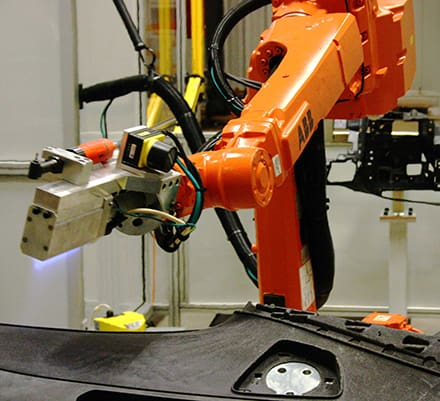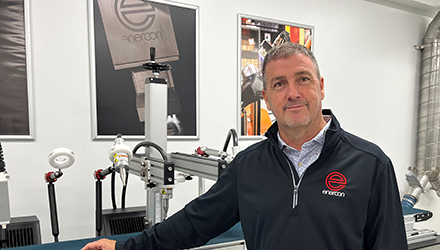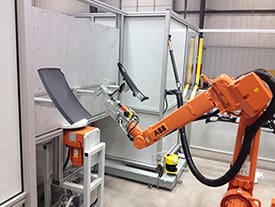An Overview of Surface Treatment for Three-Dimensional Objects
If you’ve attempted to print, label, or otherwise decorate a three-dimensional (3-D) product, you’ve probably been frustrated by an ink or adhesive that refused to adhere to the part’s surface. You may have tried different types of ink or adhesive formulations to get the job done, perhaps even used chemical primers or batch-treating processes. Still,…
Read MoreAutomation Improves Plasma & Flame Surface Treatment Productivity
The manufacturing of virtually everything from toothbrushes to auto parts can benefit from the use of atmospheric plasma treatment and flame treatment during assembly and decorating operations. These technologies increase material surface energy to promote bonding with inks, adhesives, paints and other coatings. Companies in the medical, automotive, packaging, consumer products, wire & cable, sporting goods, furniture, and others markets find that…
Read MoreWhat Plasma Actually Does to a Surface to Improve Adhesion
Air plasma surface treating is an emerging green technology for leading manufacturers tasked with assembling and decorating plastics, composites, glass and metals. It is a powerful, yet relatively inexpensive technology that is used by both Fortune 100 companies and small operations to improve bond strength, product quality and throughput. You can see the effects of…
Read MoreTop 3 Strategies to Improve Your Adhesive Bonding Operations
Production & design engineers are challenged with developing manufacturing processes that yield optimal results for quality and throughput. Since many do not fully understand the chemistry aspects of interfacial surface adhesion, they rely on conventional production methodologies, which ultimately undermines the repeatability of their success. In this new webinar, industry experts Wilson Lee (Enercon Industries)…
Read MoreIs Plasma Treating the Missing Link in Your Adhesive Bonding Operations?
To enable adhesive bonding, manufacturers rely on primers, cleaners, chemical etching & mechanical roughening. However, these traditional surface preparation methods are notorious for limiting productivity & product quality for the following reasons: Use of in-line plasma & flame surface treating is on the rise because it solves these challenges by cleaning, etching & functionalizing surfaces…
Read MoreSee How Plasma & Flame Treatment Prepare Surfaces for Adhesion
LIVE DEMO REPLAYSee Enercon’s Wilson Lee conduct live demonstrations to display how atmospheric plasma and flame surface treating technologies improve surface energy for improved adhesion of inks, adhesives, & coatings. Topics include: Whether you’re new to surface treating or an industry veteran this presentation has something for everyone. Access to the webinar includes both the…
Read MoreMedical Device Engineer’s Guide for Improving Adhesion with Atmospheric Plasma
As joining of medical plastics is becoming more complex and sophisticated in performance specifications and structural complexity, surface treatment is an integral part of medical assembly processes. This 30-minute webinar, Enercon and BTG Labs provide insights into the capabilities of atmospheric plasma treatment systems and how medical device engineers can use these technologies and surface…
Read MoreTroubleshooting Adhesive Bonding Failures
When it comes to your health, where you go for help can determine the remedy. A surgeon might lean toward surgery, a pharmacist might suggest a new prescription, and a life coach might recommend lifestyle changes. Likewise, when you have an adhesive bonding failure getting insights from an adhesive supplier, a surface characterization solutions provider and…
Read MoreIntegrator’s Guide to Implementing Plasma & Flame Treating
Be your customer’s hero. Learn how to keep their costs down & your profits up with smart integration-ready systems from Enercon. We eliminate pain points for integrators by offering streamlined implementation & simplified operation for you and your customer. This presentation provides insights on these technologies and how collaboration between Enercon and integrators create productive…
Read MoreImprove Adhesion Results with New Scientific Diagnostics & Surface Treating
Plasma & flame surface treaters clean, etch and functionalize surfaces to improve bonding with adhesives, inks, coatings and paints. Dyne level and contact angle are commonly used to measure treatment effectiveness. Today, new automated scientific diagnostics are used to identify a more useful measurement: surface free energy, including polar and dispersive components. Experts on surface…
Read More










